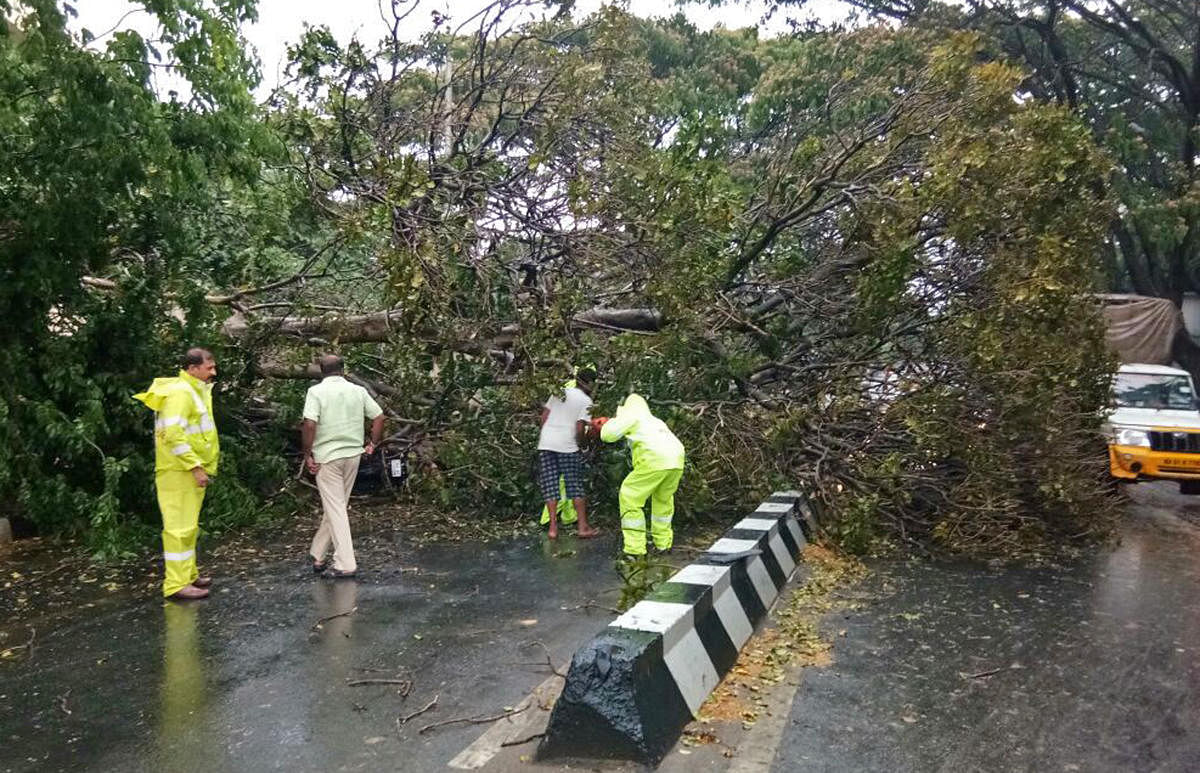
BBMP staff have no clue how to build tree-friendly footpaths and ensure the green lives on.
Trees crashing during the monsoon is a recurring problem in Bengaluru. According to Dr T V Ramachandra of the Centre for Ecological Sciences, Indian Institute of Science, concrete footpaths are a major cause of trees collapsing. "Concretisation highlights the environmental illiteracy among bureaucrats," he says.
The concrete hinders the ecological process, and with no root respiration, the roots become vulnerable to pests. "Planting weak, exotic species, and choking plant roots with concrete are the prime reasons for the loss of tree stability," says Ramachandra.
The bureaucrats do everything against the interest of trees. "And irrational pruning without proper anti-fungal treatment also affects them," he says.
Vijay Nishanth, tree doctor and founder of Project Vruksha, calls for a tree census. "There has been no tree census in the city for years. A census gives us an exact count of the trees, their age, and an indication of their health," says Nishanth.
When roads are cut open to lay sewage and water lines, trees are affected. "This also damages the root of the tree and weakens it," says Nishanth. "The ideal space that should be left around trees is three feet."
Urban planners, meanwhile, point out that every township must mandatorily have 15% of open space like parks and walkways. This is currently not the case in Bengaluru.
Unfortunately, the emphasis is on beautifying buildings and structures, rather than maintaining a green cover. This has resulted in the indiscriminate felling of trees.
Samhitha B S, urban planner, says pedestrian paths must be planned according to the footfalls in a location.
"Footpaths should either be behind the tree or in front. If that can't be done, then ample concrete-free space must be left around the tree," she says. She adds that the bigger the trunk of the tree, the more the space that should be left around it.
Pruning ahead of monsoon
A senior Bescom official says pruning of trees is in progress ahead of the monsoon. "The staff are trained on the job and have not undergone any horticulture training. They are instructed to trim only those branches that pose a hindrance to the power lines," he says.
Is he aware of erratic chopping? "We didn't know this is happening. We will issue a circular and make sure it doesn't happen," he says.
Don't just chop off branches
Environmentalist Vijay Nishanth calls for more scientific trimming of tree branches." What we see right now is that branches protruding towards electrical wires and poles are just chopped off. This causes an imbalance and leads to the tree leaning to one side," he says. He explains the pruning must happen round the year, and not at one go.
We must save green cover
Bengaluru, spread over 741 sq.km, had 69 per cent of its landscape covered with trees. Today, 79% of its landscape is covered with paved surfaces (buildings, concrete, etc.). If this
trend continues, 94% of the landscape by 2020 and 98.5% by 2025 will be covered with paved surfaces.
The region would be deprived of oxygen (less than 5% green cover as against the required 33%) and water (45% of Bengaluru depends on groundwater and the table is declining with the increase in paved surfaces).
3 feet - minimum radius to be left open around a tree trunk.